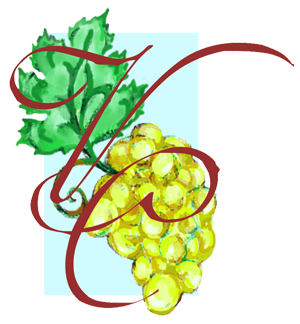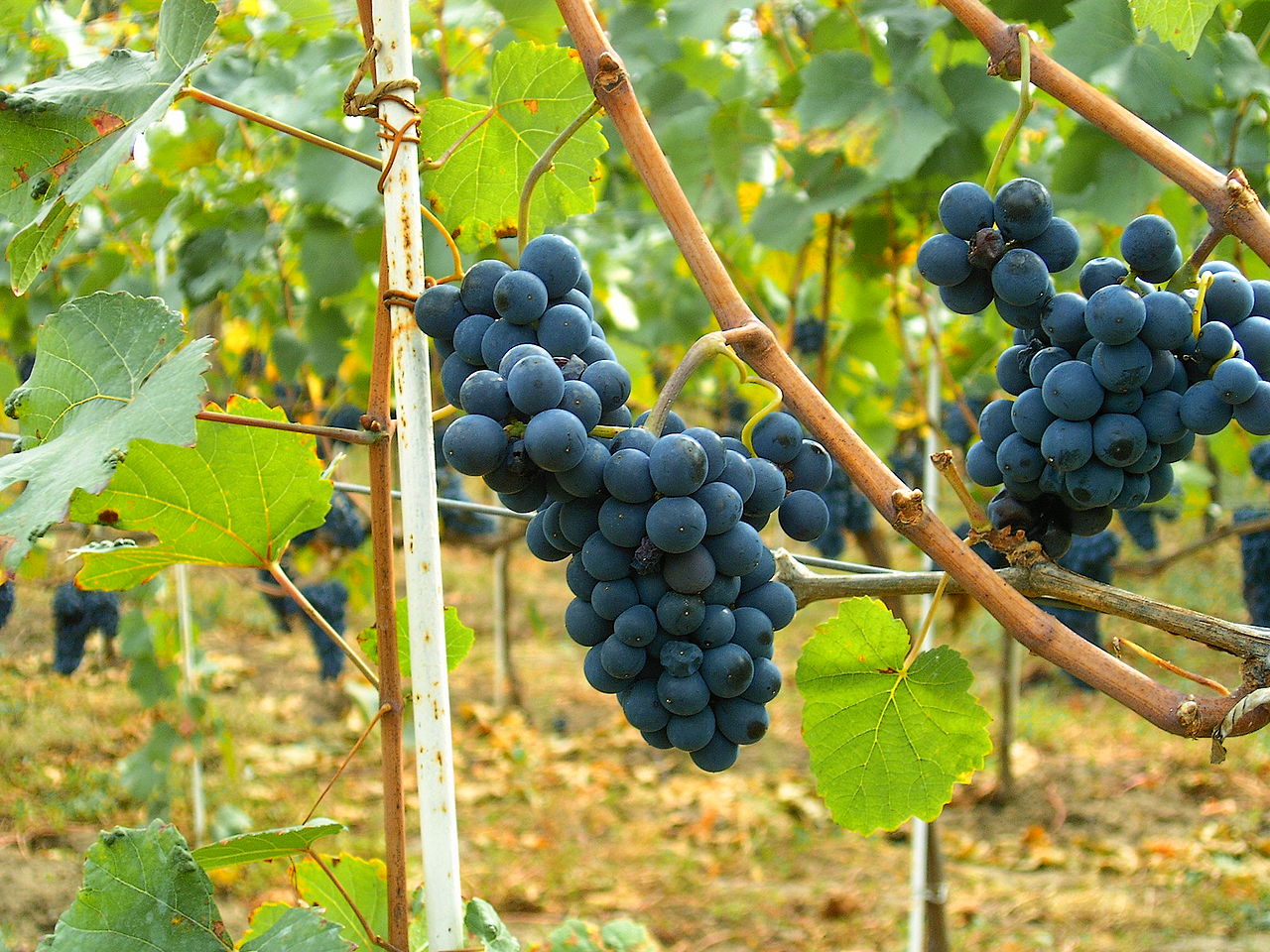Pinot noir (French: [pino nwaʁ]) is a red wine grape variety of the species Vitis vinifera. The name may also refer to wines created predominantly from Pinot noir grapes. The name is derived from the French words for pine and black; the pine alluding to the grape variety having tightly clustered, pine cone-shaped bunches of fruit.[1]
Pinot noir grapes are grown around the world, mostly in the cooler regions, but the grape is chiefly associated with the Burgundy region of France. Other regions that have gained a reputation for Pinot noir include the Willamette Valley of Oregon, the Carneros, Central Coast and Russian River AVAs (American Viticultural Area) of California, the Elgin and Walker Bay wine regions of South Africa, South Australia, Tasmania and Yarra Valley in Australia and the Central Otago, Martinborough and Marlborough wine regions of New Zealand. Pinot noir is also a primary variety used in sparkling wine production in Champagne and other wine regions.[2]
It is widely considered to produce some of the finest wines in the world, but is a difficult variety to cultivate and transform into wine.[3] The grape's tendency to produce tightly packed clusters makes it susceptible to several viticultural hazards involving rot that require diligent canopy management. The thin-skins and low levels of phenolic compounds lends Pinot to producing mostly lightly colored, medium bodied low tannin wines that can often go through dumb phases with uneven and unpredictable aging. When young, wines made from Pinot noir tend to have red fruit aromas of cherries, raspberries and strawberries. As the wines age, Pinots have the potential to develop vegetal and "barnyard" aromas that can contribute to the complexity of the wine.[2]
Pinot noir's home is France's Burgundy region, particularly in Côte-d'Or. It is also planted in Argentina, Australia, Austria, Bulgaria, Canada, Chile, northern parts of Croatia, Czech Republic, the Republic of Georgia, Germany, Greece, Israel, Italy, Hungary, Kosovo, the Republic of Macedonia, Moldova, New Zealand, Romania, Serbia, Slovakia, Slovenia, South Africa, Switzerland, Ukraine, United States, and Uruguay. The United States has increasingly become a major Pinot noir producer, with some of the best regarded coming from the Willamette Valley in Oregon and California's Sonoma County with its Russian River Valley and Sonoma Coast appellations. Lesser known appellations can be found in Mendocino County's Anderson Valley as well as the Central Coast's Santa Lucia Highlands appellation and the Santa Maria Valley & Sta. Rita Hills American Viticulture Area in Santa Barbara County. In New Zealand, it is principally grown in Martinborough, Marlborough, Waipara and Central Otago.
The leaves of Pinot noir are generally smaller than those of Cabernet Sauvignon or Syrah and the vine is typically less vigorous than either of these varieties. The grape cluster is small and conico-cylindrical, vaguely shaped like a pine cone. Some viticultural historians believe this shape-similarity may have given rise to the name.[4] In the vineyard Pinot noir is sensitive to wind and frost, cropping levels (it must be low yielding for production of quality wines), soil types and pruning techniques. In the winery it is sensitive to fermentation methods, yeast strains and is highly reflective of its terroir with different regions producing sometimes very different wines. Its thin skin makes it susceptible to bunch rot and similar fungal diseases of the bunch. The vines themselves are susceptible to powdery mildew, and in Burgundy (and elsewhere) infection by leaf roll and fanleaf viruses causes significant vine health problems. These complications have given the grape a reputation for being difficult to grow: Jancis Robinson calls Pinot a "minx of a vine"[5] and André Tchelistcheff declared that "God made Cabernet Sauvignon whereas the devil made Pinot noir."[5] It is much less tolerant of hard, windy, hot and dry, harsh vineyard conditions than the likes of Cabernet Sauvignon, Syrah, Merlot, or Grenache.
However, Pinot noir wines are among the most popular in the world. Joel Fleischman of Vanity Fair describes pinot noir as "the most romantic of wines, with so voluptuous a perfume, so sweet an edge, and so powerful a punch that, like falling in love, they make the blood run hot and the soul wax embarrassingly poetic."[6] Master Sommelier Madeline Triffon calls Pinot "sex in a glass".[6]
The tremendously broad range of bouquets, flavors, textures and impressions that Pinot noir can produce sometimes confuses tasters.[4] In the broadest terms, the wine tends to be of light to medium body with an aroma reminiscent of black and / or red cherry, raspberry and to a lesser extent currant and many other fine small red and black berry fruits. Traditional red Burgundy is famous for its savory fleshiness and 'farmyard' aromas (these latter sometimes associated with thiol and other reductive characters), but changing fashions, modern winemaking techniques, and new easier-to-grow clones have favored a lighter, more fruit-prominent, cleaner style.
The wine's color when young is often compared to that of garnet, frequently being much lighter than that of other red wines. This is entirely natural and not a winemaking fault as Pinot noir has a lower skin anthocyanin (coloring matter) content than most other classical red / black varieties. Callistephin, the 3-O-glucoside of pelargonidin, an orange colored anthocyanidin, is also found in the berry skins of Pinot Noir grapes.[7]
However, an emerging, increasingly evident, style from California and New Zealand highlights a more powerful, fruit forward and darker wine that can tend toward Syrah (or even new world Malbec) in depth, extract, and alcoholic content.
Pinot noir is also used in the production of Champagne (usually along with Chardonnay and Pinot Meunier) and is planted in most of the world's wine growing regions for use in both still and sparkling wines. Pinot noir grown for dry table wines is generally low-yielding and of lesser vigour than many other varieties, whereas when grown for use in sparkling wines (e.g. Champagne) it is generally cropped at significantly higher yields.
In addition to being used for the production of sparkling and still red wine, Pinot noir is also sometimes used for rosé still wines, Beaujolais Nouveau-styled wines, and even vin gris white wines. Its juice is uncolored.




